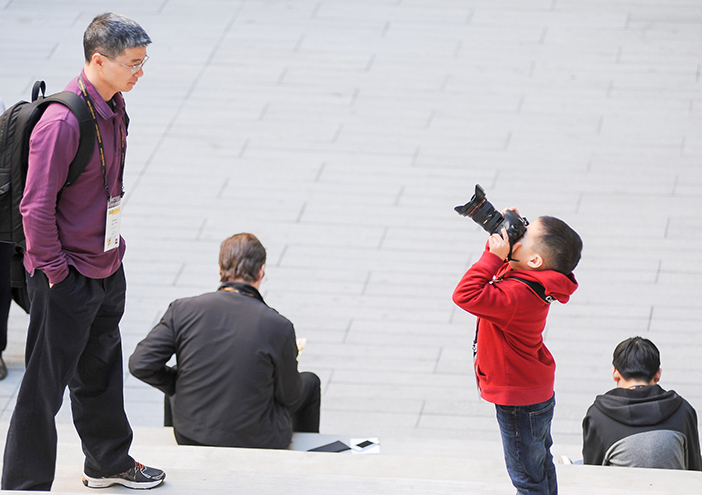“How Good is Your Camera?” Harvey Mudd Physics Researchers Seek Answer
June 29, 2017
In a study published in the American Journal of Physics (May 16, 2017), Harvey Mudd researchers describe methods for measuring the spatial resolution of devices, such as digital cameras; it tries to answer the question, “How good is your camera?” The first author of this study is recent physics graduate Calvin Leung ’17, who worked with co-author and physics professor Tom Donnelly. The paper grew out of a lab, The Science of Photography, that Leung took with Donnelly as a sophomore.
Two methods of quantifying the spatial resolution of a camera are described, performed and compared, with the objective of designing an imaging-system experiment for students in an undergraduate optics laboratory. With the goal of characterizing the resolution of a typical digital single-lens reflex (DSLR) camera, researchers motivate, introduce and show agreement between traditional test-target contrast measurements and the technique of using Fourier analysis to obtain the modulation transfer function (MTF). The advantages and drawbacks of each method are compared.
Leung and Donnelly explore the rich optical physics at work in the camera system by calculating the MTF as a function of the collected light’s wavelength and the camera’s f-number. The Canon 40D demonstrates better spatial resolution at short wavelengths, in accordance with scalar diffraction theory, but is not diffraction-limited, being significantly affected by spherical aberration. Their experiment can be built and data analysis routines written in an undergraduate optics lab setting.
The researchers demonstrated a number of ways to quantify the resolution of a camera with a relatively simple experimental setup. Their measurements suggest that the resolution of a typical DSLR, such as the Canon 40D, is limited by spherical aberration introduced by the camera lens.
This experiment provides a concrete introduction to cornerstone concepts of modern optics, including Fourier analysis, diffraction theory and analysis techniques to resolve information in spatial data. The emphasis placed on overcoming practical problems dealt with in the MTF measurement (i.e., making measurements that are robust against noise) makes the experiment well-suited for the undergraduate laboratory and for students going on in the optics/photonics industry.
A recipient of the National Science Foundation’s prestigious Award for the Integration of Research and Education, Harvey Mudd College has long recognized the importance of collaborative student-faculty research, setting aside nearly $3 million annually for the purpose. Students collaborate with faculty during the academic year and in the summer through the Harvey Mudd Summer Research Program. Harvey Mudd professors believe research is a powerful teaching tool that leads to students’ disciplinary learning and professional and personal growth well beyond traditional classroom settings. Students and faculty collaborate on many projects that are presented jointly at professional scientific conferences and in peer-reviewed journals, and both have been honored with distinguished national awards.
